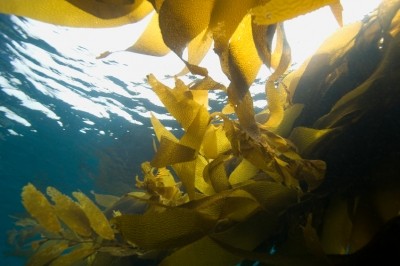Japanese company develops improved seaweed extract for cosmetics
seaweed extract Fuicoidan, an active ingredient used as a softener
in hair and skin care applications.
The new process, which will be unveiled at the forthcoming In-Cosmetics show held in Barcelona, Spain in April, is said to turn a once dark-colored gloopy extract into a pale yellow viscous substance that is significantly more compatible to formulate.
The company says that its process involves treating the seaweed with ethyl alcohol, which removes the carotenoids that give the extract its thicker consistency and darker color. The ingredient then undergoes a further extraction process under alkaline conditions and a fine filtration process.
After undergoing this process, the extract's higher viscosity makes it far more compatible with a host of other base and active ingredients, easing the formulation process considerably.
Further to this it is odorless, non-irritating and anti-allergic, attributes that are key to the success of most ingredients within the sector.
The resulting extract, known as UBE-Fucoidan is said to promote the softness and moisture of both hair and skin. More specifically the company also claims that it inhibits oxidative degeneration of collagen and hyaluronic acid, which in turns can help to smooth out wrinkles and fine lines.
As the ingredient is both natural and it has anti-aging properties it is hitting on two of the biggest trends in the industry at the current time, something that is bound to add to its appeal.
Fucoidan is a type of glyconutrient and is being developed as a specialized type of nutraceutical. The main effective ingredient in Fucoidan is the fucose, one of the eight essential biological sugars.
It has been been included in the diet of Okinawa islanders for centuries and is attributed as one of the reasons why the region has one of the world's highest rates of longevity.
Japanese Fucoidan is extracted from the two brown seaweeds, Cladosiphon okamuranus and is grown in farms under controlled conditions that ensure its purity and that it maintains high levels of nutrients. Another form of the plant is also cultivated in the Norwegian Fjords.
Once harvested it is used for food, supplements and could now become a significant ingredients in cosmetic applications, if it proves successful.













